On Substack, Made in China – Does it matter who writes history if no one reads it?
Readers of this weblog care about China. But know too little about it. Become less ignorant.
On Substack, Made in China – Does it matter who writes history if no one reads it?
Readers of this weblog care about China. But know too little about it. Become less ignorant.
This is not the most important paper, but it is a contribution: Complete mitogenomes document substantial genetic contribution from the Eurasian Steppe into northern Pakistani Indo-Iranian speakers. Abstract:
To elucidate whether Bronze Age population dispersals from the Eurasian Steppe to South Asia contributed to the gene pool of Indo-Iranian-speaking groups, we analyzed 19,568 mitochondrial DNA (mtDNA) sequences from northern Pakistani and surrounding populations, including 213 newly generated mitochondrial genomes (mitogenomes) from Iranian and Dardic groups, both speakers from the ancient Indo-Iranian branch in northern Pakistan. Our results showed that 23% of mtDNA lineages with west Eurasian origin arose in situ in northern Pakistan since ~5000 years ago (kya), a time depth very close to the documented Indo-European dispersals into South Asia during the Bronze Age. Together with ancient mitogenomes from western Eurasia since the Neolithic, we identified five haplogroups (~8.4% of maternal gene pool) with roots in the Steppe region and subbranches arising (age ~5–2 kya old) in northern Pakistan as genetic legacies of Indo-Iranian speakers. Some of these haplogroups, such as W3a1b that have been found in the ancient samples from the late Bronze Age to the Iron Age period individuals of Swat Valley northern Pakistan, even have sub-lineages (age ~4 kya old) in the southern subcontinent, consistent with the southward spread of Indo-Iranian languages. By showing that substantial genetic components of Indo-Iranian speakers in northern Pakistan can be traced to Bronze Age in the Steppe region, our study suggests a demographic link with the spread of Indo-Iranian languages, and further highlights the corridor role of northern Pakistan in the southward dispersal of Indo-Iranian-speaking groups.
Don’t focus on the percentages too much. Rather, focus on the coalescence estimate. Basically, that indicates diversification and demographic expansion. The presence in the southern subcontinent is indicative of the fact that “steppe” ancestry and cultural influence extends far beyond the distribution of modern Indo-Aryan languages. R1a we know, as it is found in adivasis. And low fractions of steppe are found in most South Indian groups (but not all).
Some random thoughts from Major Amin about the Hazaras of Pakistan and Afghanistan and the (exemplary and successful) use of divide and rule by the British..
HAZARAS -VICTIMS OF IMPERIAL POLICIES OF DIVIDE AND RULE
Hazara Pioneers were employed by Brigadier General Dyer of Jallianwalla Bagh notoriety in Sarhad District of Iranian Baluchistan in First World War. To my mind and based on family anecdotes of my grandfather’s elder brother Agha Abdul Rauf in British Police since 1914 or so (died 1982-God bless his great soul) Hazaras showed political defiance against the British when some Hazara soldiers of 124th Baluchistan Infantry deployed in Iran defected to the Persian side. This much unknown incident as per Agha Abdul Rauf played crucial role in British decision to discontinue Hazara recruitment in Infantry units of British Indian Army after 1921-22.
In his book Raiders of Sarhad Brigadier General Dyer writes words to the effect that Hazara Pioneers were panting to kill the Reki and other Baloch of Sarhad district who being Sunni the Pioneers regarded as infidels and that this would guarantee them a place in paradise. Words to this effect. I read the book in 1977 or 1978. The British cannot be blamed for practicing “Divide et Impera” as they had their own national interests! But Pakistani state of post 1947 cannot be excused for any sectarian or ethnic bias which historians need to research! I will try to find it and would quote Dyers exact remarks.
It is a sad history of how the Britishers divided India and this region and used one tribe against another! The Punjabis against Hindustanis, Gurkhas against Pashtuns, Turi Shias against non-Shia Pashtuns, Hazara Pioneers against Baloch, a Punjabi Police force in Quetta to control Quetta, Hindustanis against Santhals, Hindustanis against Mysore and so on. The history of so called Muslims of Indo Pak is chequered, questionable and frequently highly dubious! Such as the fact that Pathan or Punjabi or Baluchi Muslims had no hesitation in killing Muslims in North India as part of British company’s army in 1857 ! Cureton’s 15th Lancers Pathans were burning and raping Ranghar Muslim villages as part of Cortland’s force in 1857-58 in Jamalpur and many other parts of Hissar but refused to fight against Turks! Similarly Pathans of 124th Baluchistan Infantry were damn comfortable with killing Persian Muslims in South Persia in WW 1 but had issues fighting Sunni Muslims in Mesopotamia, the reason why 124th Baluchistan Infantry was diverted from Mesopotamia to Persia and 2/124th Baluchistan Infantry raised in Persia in WW 1.
The sectarian bug is in Muslims of all parts of the world and the British cannot be blamed at all for using it!
Personally I have many Hazara friends having studied with them at Quetta in 1968-77. They were the most adventurous and sports loving people. Whenever I climbed the Murdar Garh Mountain near my house in Quetta I would see Hazara men on their morning walk climbing Murdar Garh. My Afghan American NGO boss a Pashtun always employed Hazara staff at house and told me once that he liked them because they were far cleaner in personal hygiene and harder working than Pashtuns or Tajiks! Note that this gentleman himself was a Pashtun! Taking his tip I also employed a Hazara maid and she turned my house at Kabul into heavens on earth. Indeed I would say that 70 % of maid servants in Kabul were Hazaras. The assertion of Husseini in Kite Runner about masters of the house fathering sons from Hazara maid servants is a hard fact of Afghan history. What I liked about Ismaili Hazaras was their liberal attitude towards religion. My girlfriend never distinguished between Ramzan and other months of the year. Hazara women , were more painstaking and worked hard in performing their feminine duties while non-Hazara women of all ethnicities , as this scribe personally experienced don’t move a limb at all and regard sex as the sole hard labour job of their male partner. In Afghanistan again on my morning walks to Tapa i Bibi Mahru I saw Hazaras exercising and jogging. I hardly ever saw any other ethnicity doing it. My Khalqi friend a senior leftist regime member loved Hazara women as he said they were hairless unlike many non Hazara women. Note that this officer had been friends with women of Naghmas stature in beauty and fame ! Was instrumental in creating the female cultural troupe in Afghan Ministry of Interior in 1980s early and was
famous for having some good company under his massive office table while holding the fort in ministry of Interior! Contact with USSR/Russia certainly improved the love making capacity on both sides of Hindu Kush mountains. Afghans loved going to courses in USSR and my ministry of Interior guards remembered with nostalgia the Russian blondes they met at the Police Training Academy in Riga or the Assassination School near Tashkent !
To sum up the Hazaras are a great people and it is sad that they have been tageted becase of ethnicity and sect. It is right that Hazaras were persecuted in Afghanistan. However the leftists altgough Pashtun dominated finished this discrimination and Sultan Ali Kishtmand was given prime ministers position twice by the Khaliqis and Parchamis. The true liberators of Hazaras were the leftists as well as the USSR who gave them respect and political acceptance.
The Pakistan sponsored Afghan Taliban are die hard enemies of Hazaras. In Quetta starting from 1990s Hazaras have been systematically attacked by Afghan Taliban and the Hazaras are now migrating to Karachi and Punjab.
Parachinar also has some Hazaras from the Fauladi clan. Jughuri in Ghazni Province Afghanistan has one of the highest literacy rates in Afghanistan.
Another BP Podcast is up. You can listen on Libsyn, iTunes, Spotify, and Stitcher. Probably the easiest way to keep up the podcast since we don’t have a regular schedule is to subscribe at one of the links above.
Would appreciate more positive reviews!
 In this episode Srikant Kṛṣṇamācārya and I talk to Koenrad Elst, an Indologist who is also a supporter of what can be fairly described as “Right wing Hindutva politics”. We ask him about his understanding of Hinduism, Hindu identity and other topics (including the “Aryan Migration Theory”, which he vigorously opposes, though we did not have the time or inclination to discuss this much further; you can read more of his writings at this link and here to get a clearer idea of where he is coming from and you can read this and this to see the pro-AMT point of view)..
In this episode Srikant Kṛṣṇamācārya and I talk to Koenrad Elst, an Indologist who is also a supporter of what can be fairly described as “Right wing Hindutva politics”. We ask him about his understanding of Hinduism, Hindu identity and other topics (including the “Aryan Migration Theory”, which he vigorously opposes, though we did not have the time or inclination to discuss this much further; you can read more of his writings at this link and here to get a clearer idea of where he is coming from and you can read this and this to see the pro-AMT point of view)..
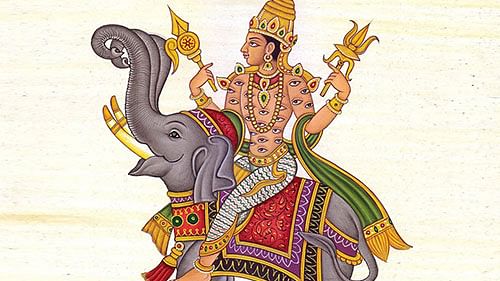
BPer Mukunda and I were having a discussion on Twitter, which I want to elevate and push to the blog, because it’s somewhat important.
When I was young (20th century) I read stuff about how the Indo-Aryans described the natives of the subcontinent as dark and “snub-nosed.” That their arrival in some ways was a meeting of two different races.
In the 2000’s I read other books and works that suggested that actually, these descriptions were metaphorical. Terms like “dark” in other words reflect an ideological or tribal conflict, with the descriptions pointing to tropes that signal which side is evil and which side is good. This is not a crazy view. The anthropology is clear that a certain level of fictitious dehumanization occurs with inter-group conflict.
So I accepted this view and moved on with my life.
But in the 2010’s things changed. I am now convinced that 3,000-4,000 years ago a people who resembled what we would term “white” expanded within the Indian subcontinent. If modern Armenians are white, then the Indo-Aryans were white. At least initially. In the subcontinent, they met a variety of people. Some of them, such as in Sindh, were of brownish complexion. Others, to the south and east, would have been considerably darker. I also assume that the Vedas were constructed in situ in the Indian subcontinent. That is, they reflect a milieu of people who were encountering the northwest of the subcontinent, and had recently traversed through BMAC (Indra may actually be a BMAC diety).
What’s the upshot here? I know think that the metaphorical view of the physical descriptions should be set next to the literal view. The reality is probably a mix. But the fact is that groups with very different physical appearances did interact in ancient India. The Aryans were almost certainly very light-skinned, with “sharp features”, in comparison to many of the people they encountered. Though one can construct hybrid scenarios, where Indo-Aryan enemies were described in inaccurate ways precisely because those tropes were associated with tribes and peoples the Indo-Aryans had conquered.
Someone who has deep knowledge of the Vedas in Sanskrit and genetics needs to look into this. That’s obviously not me.
I just finished reading Michael Axworthy’s Iran: Empire of the Mind, one of Razib Khan’s recommended reads on Iran. The book serves as a useful primer on Iranian history for novices (such as myself), covering over 3,000 years of history in less than 300 pages. It lacks the literary flair and flourish of Tim Mackintosh-Smith’s magisterial Arabs. I found myself skimming through the latter parts of the book- the Pahlavi era and the subsequent Islamic Revolution- as I am broadly familiar with the events of the modern period.
Pre-Islamic Persia was an advanced and sophisticated civilisation. Axworthy provides a good overview of the Achaemenid, Parthian and Sassanid periods of Iranian history. Ancient Iranians developed a complex and nuanced theology centred around the teachings of the prophet Zoroaster. Zoroastrianism was the predominant religion of the Sassanid Empire, one of the superpowers of the pre-Islamic world. All of this was to change with the arrival of Islam in the seventh century. The armies of Islam burst out of the Arabian Peninsula like a supernova and reduced the Sassanid Empire to dust. The Zoroastrian religion was swept away in this upheaval.
One group of Zoroastrians escaped and sought refuge in Gujarat in Western India. These Zoroastrians are commonly known as the Parsis (from Pars or Persia). The essay below is a personal account of the Parsis of Mumbai. I had written it a decade ago. Reading Axworthy’s book brought some of those sweet memories back.
What’s going on?
From Major Amin’s book on the history of the Pakistan army..
The First 1947-48 Indo-Pak War
The British started with a strategic plan having Britishers dominating the key posts in both the newly created countries! The war was fought largely by individuals on the Pakistani side and by the British Governor General and senior army commanders on the Indian side! Gilgit was won by Pakistan simply because the British officers of Gilgit scouts and the Gilgit Scouts VCOs acted with remarkable unison! No credit to the Pakistani Government, which had no clue about what was happening in Gilgit in September-October 1947. The Indians were doomed in this case since their Dogra Governor made plain his intentions to do away with the Gilgit Scouts! The VCOs of the Gilgit Scouts acted tactically but while doing so achieved a great strategic victory for Pakistan! It was a fairly even contest. There were two non- Muslim Companies in the 6 J and K at Bunji against two non-Muslim Companies! There was an airfield at Gilgit just like there was one at Sringar! The Indians lost the Northern Areas because of outright strategic incompetence! The Pakistanis have proved equally strategically barren! No statue at Islamabad commemorates what the VCOs of the Gilgit Scouts led by the indomitable Scott Major W.A Brown achieved for Pakistan in October November 1947! Without Gilgit or Baltistan what would have been Pakistan’s China policy! There was a Dogra Governor in Gilgit in 1947! Today the Northern Area still does not have a Gilgiti Muslim Governor! Continue reading Major Amin’s Summing up of the 3 Major Indo-Pak Wars
(A few additional comments added on 02/21/21)
COVID-19 is still a menace that is affecting thousands of people every day across the globe. However, vaccination and palliative therapies indicate that there is less of it ahead of us than behind us. I am training in pathology at a hospital in Texas and do not have the required qualifications to talk about the nitty gritty of COVID virus and its structure. However, I was involved in management of patients with COVID who were in intensive care and before that, in procuring convalescent plasma for COVID patients. I want to write about the policy and public health side of managing COVID and not the clinical perspective, which is not my primary specialty. This piece was inspired by two articles in the New Yorker, the first is a long-read from Lawrence Wright (here) and the second is from Charles Duhigg (here).
When news about COVID started trickling at the end of December 2019, I was not alarmed. I thought of SARS, Swine flu, Ebola and MERS, which were mostly containable viral diseases and their human impact was not global. I was at a conference in Dallas at the end of January, where a presentation was on memories of dealing with the first Ebola case in the US. I remember sitting in the back row of the auditorium and listening to the lengths that a particular hospital in Dallas went, to quarantine the said Ebola patient. By February, there was news of how Chinese state was hiding things about the mysterious viral infection and whistleblowers were shedding more light on the disease. It was in late January-early February that first cases of the mystery virus were discovered in Seattle suburbs and suppression of data/news about COVID started in the US (the Trump administration). I was at another conference in Los Angeles at the end of February and saw the news that cases of COVID had been diagnosed near San Francisco.
Upon my return to work in the first week of March, I was required by the hospital to report travel to the employee health clinic, which I did. Prior to arrival of COVID, I was going to travel to Ohio for an elective rotation and to New York to present at a conference. With COVID, all plans had to be cancelled. Since March of last year, COVID has affected millions of people across the globe and disrupted life as it used to be. One of my friends refers to any year before 2020 as “X years B.C.” (before COVID). Moving from my personal story to a bird’s eye view, what can we learn from COVID moving forward? I have tried to distill my thoughts about the pandemic, pandemic response and best practices.
Based on what we know now, here are a few things about COVID response, with relevant exceptions:
1. Island nations have generally done better, with exception of Britain and to an extent, Vietnam. At the start of the pandemic, there were fears that autocratic governments will prevail better because dictators don’t have to worry about human rights, laws or courts. That fear has not come true, generally. Australia, New Zealand, Taiwan, Sri Lanka or Vietnam are mostly democratic nations.
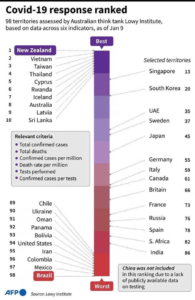
2. Things have been better when scientists and public health officials have been allowed to be at the forefront, except in the case of Sweden, where the top epidemiologist wanted to test his “herd immunity” theory. The New Yorker story from Charles Duhigg that I mention above, refers to a significant difference in COVID cases and deaths between New York, where politicians were at the forefront of COVID response, versus Washington state, where public health officials made the rules.
3. African nations have done better at managing COVID than most ‘first-world’ countries, in my opinion, due to their experience in dealing with Ebola, MERS and similar viral illnesses. There has been a recent second wave and a South-African variant that is more resistance to the mRNA vaccines than the OG COVID-19 or the UK variant. There was a recent story in the BBC about the second wave (here) and earlier, about the low rates of infection and mortality in the African continent (here).
4. It is incredibly hard to restrict what constitutes “daily life” even in the face of a deadly pandemic. Human beings are social animals and severing that connection from others, whether in form of closing offices or bars and restaurants, cannot be reliably depended on for long periods. Travel has become another necessity in this day and age, for business or pleasure. Airlines and the hospitality industry as a whole will be running losses for years to come. I traveled three times during the last year, twice domestically and once on an international route. I tried to be cautious and got tested before/after each of these journeys, which, admittedly is not a perfect way of being safe from COVID. There were multiple studies about spread of COVID on airplanes and I was constantly in fear of contracting it while flying, despite all precautionary measures.
I do not frequent bars/clubs in general so i didn’t miss them much. However, I did miss spending time at the library and our nearby Barnes and Noble. If one were to look at the graphs of cases and deaths in the US, there are peaks around memorial day, 4th of July, Labor day, Halloween, Thanksgiving, Christmas and New Year. Around Christmas, close to a million people were flying every day in the U.S. Graphics from the Washington Post tracker.
![]()
![]()
5. China, not completely culpable but deserves blame for its early missteps and obfuscation (a la Great leap forward) when it comes to COVID. We still don’t know if COVID transmission started at a wet market or somewhere else. Wuhan is back to pre-COVID times while the rest of world keeps suffering. Chinese authorities have tried to strong arm the WHO and any outside effort to investigate the origin of transmission of COVID. I do not subscribe to the conspiracy theory that COVID is a “China virus” or that it was manufactured in a Chinese laboratory.
6. Vaccines. I consider the development of COVID vaccines a modern day miracle. The fastest that a vaccine had been previously prepared was close to three years. The severity of disease, mounting death rate and irresponsible behavior by the general public, made the timeline for introduction of a vaccine shorter than ever. Fortunately, the mRNA type platform vaccines had been in development for years and this was the right moment for them. The journey started in January 2020, when COVID genome was first shared by Chinese scientists and culminated in November/December 2020, when two major candidate vaccines was ready to be administered. Since mid-December, more than 73 million doses of either of these vaccines has been distributed in the US. This is a graphic from the Washington Post tracking vaccine distribution in the US:
![]()
I got vaccinated in January and feel fortunate to have that immunity. However, the mRNA vaccines have a 66% response to the South-African variant (versus 90-95% against the OG COVID). The AstraZeneca vaccine has a 23% immune response to the South African variant. There is very little good data on vaccines developed by Russia, China and India. From what we know about their mechanisms of action, Russian vaccine is similar in mechanism to the AstraZeneca vaccine (uses inactivated Adenovirus), while the Chinese vaccine is based on inactivated virus and the Indian (serum institute version) uses live attenuated virus. Graphic from NEJM.
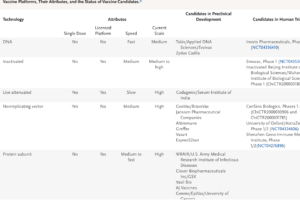
7. Viruses don’t care about state or national boundaries. The Sturgis motorcycle rally in South Dakota in August led to increased cases in neighboring Minnesota (here). A single conference in Boston in Feb 2020 lead to almost 300,000 cases (here). COVID has reached Antarctica, the last bastion of human presence without infection (here).
8. Disinformation spreads faster than the truth. The famous line that “A lie can travel halfway around the world before the truth can get its boots on” was truer during the COVID pandemic than any other modern peacetime event. Since I have a medical degree and had some exposure to COVID response, I was asked by many family members and friends from across the globe about various conspiracy theories circulating regarding COVID. The top hits included COVID vaccine altering your DNA, different cocktails for treating COVID (the whole hydroxychloroquine debacle), herd immunity, exaggerated vaccine side effects, masks, Vitamin D, COVID vs Flu, PCR vs rapid testing and their predictive values, various miracle cures etc. Many of these lies and misinformed views were spearheaded by medical personnel (doctors, nurses, nurse practitioners etc) which made it incredibly hard for a layperson to know what was the truth and what was just a fanciful conspiracy theory. To top it all off, many people initially (and still) refuse to believe that COVID is real.
9. Masks work but not all masks are the same. This is related to point 4 from earlier (human nature cannot be suppressed for long). It is hard to wear a mask all the time. I work at the hospital and that being a high-risk area, everyone has to be masked almost all the time. But, due to strict masking requirement, infection rate of workers (both medical and non-medical) at our hospital stayed less than 1% even when the infection rate was close to 10% in the community that we serve. N95s which should be worn by individuals who are at the highest risk of getting COVID provide better protection than a regular surgical mask (efficacy close to 65%), which is better than a regular cloth mask (efficacy less than 50% and needs to be washed regularly). I have seen innumerable number of people wearing their masks incorrectly (i.e. nose not covered) but I think that at least they are wearing a mask. One reason that east asian nations did better at controlling the pandemic is because mask-wearing is normalized at a larger societal level, compared to “freedom from tyranny” type attitudes seen in the US. According to estimates, if 90% people in the US had worn masks at the beginning of COVID, we could have averted millions of cases and thousands of deaths.
In Arizona, there were dramatic improvements in case numbers once mask mandates were enforced. (paper from CDC here).

10. The curious case of Pakistan and India. Early in the pandemic, while COVID was running rampant through most of Europe, North America and South America, India and Pakistan had very few cases compared to their populations. While India has caught up with the rest of the world lately, Pakistan is still reporting less cases than any major city in the US per day. What is causing this divergence? There are many theories and until it is studied methodically, I don’t have a clear answer. Even people who got COVID in Pakistan, got a mild disease. Many people pointed to BCG vaccination as being semi-protective against COVID. Some commentators proposed immunity due to earlier sub-clinical viral infections. Are there genetic factors causing this? My hypothesis is that Pakistan is not as exposed to the outside world as lets say the United States is. Secondly, testing in Pakistan is at a much lower level than anywhere else. At one point last year, the state of Punjab, with a population larger than Germany, was doing close to 15,000 COVID tests a day. If you don’t test, you can’t diagnose. Cases in Pakistan and India, graphs from the Johns Hopkins dashboard.
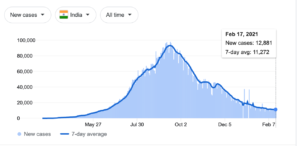
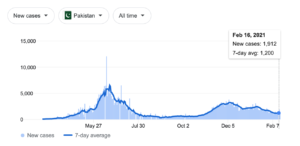
11.Personal Responsibility. The mantra of personal responsibility has been used throughout the pandemic by mostly right-wing politicians, trying to avert blame from themselves, resulting in a terrible failure. Anyone who has ever worked in customer relations can tell you that most people don’t really care about other people (knowingly or unknowingly). Public health does not work that way. One can argue that even economics doesn’t work that way either, but that is a separate debate.
12. One heard the phrase “how many lives can you save by closing the economy” or variations of it since the early days of the pandemic. The lives versus economy rubric was debated over and over, without much evidence. Countries in the EU and Australia/NZ paid people to stay home. That approach is paying them off in the long run. In a paper titled “COVID-19 and global income equality” (here), Angus Deaton showed that saving lives has a positive impact on long-term economic outlook of a country.
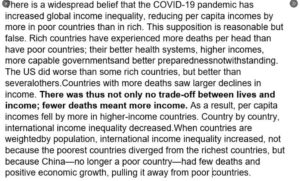
13. Is the “office space” dead? Are we going to have a different economy after the pandemic? Would there be mass migration from major cities towards smaller towns and suburbs? I don’t have these answers as I am not an economist or a public planner. But these questions interest me and I am always trying to read about them.
14. Lastly, I cannot predict what is going to happen with COVID. When the pandemic started, my hope was that it would die down within six months. With a sharp decline in case numbers and increase in vaccinated individuals, I have hope that COVID would be under control by the end of the year. Would new variants disrupt this timeline and everyone will have to get a booster vaccine at some point in time? It is quite likely.
Comments and suggestions welcome!
This is a very well written book and Ayad Akhtar has clearly come a long way from his debut novel (American Dervish) in terms of style and writing skill. The story is OK but did not really work for me. The book is said to be semi-autobiographical and I found that hard to get past. Is this his story or not? We are not supposed to ask that question, but somehow i kept getting stuck on it (perhaps because I have lived in Brookfield and have some vague notion of where he is from). But mostly I was disappointed by the narrator’s somewhat sophisticated but still very “inside the bubble wokeness”. He presents himself as someone willing to “go there” and talk about (and intelligently criticize/analyze) everything but it turns out that he is skeptical of everything but “super-elite wokeness”, which he seems to accept as just the not-so-simple truth about our world. I expect that well-off second generation desi kids will identify with a lot of what the narrator goes through (real or imagined) but that seems to be a rather narrow demographic. For the rest of us, the insights are less than advertised.
Still, he is, as you might expect from Ayad Akhtar, ready to get into hot topics (including Islam, oral sex, parent problems, racism) with all guns blazing, which can be fun. And his summary of partition and Pakistan is pretty good, and some of the other essay-like digressions (such as his explanation for the ills of late capitalism and what Robert Bork had to do with it) are also interesting; whether they are true (or useful) is not equally clear. if you are a second generation desi or are so intensely woke that think-pieces in “The Guardian” generally seem wise to you, then this is your book. But even if you are not, it is worth a quick read.
